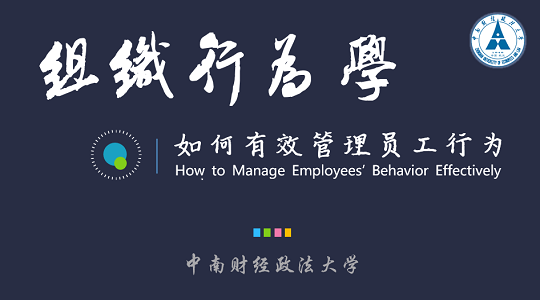
当前课程知识点:Diagnostics in Chinese Medicine > Week 1 Basic Theory of Chinese Medicine 1:Yin-Yang and Five Elements Theory > 1.2 The theory of five elements > 1.2.2 Application of the theory of five elements
返回《Diagnostics in Chinese Medicine》慕课在线视频课程列表
返回《Diagnostics in Chinese Medicine》慕课在线视频列表
同学们好
上节课我们学习了五行的相生相克和相乘相侮的规律
经过前面的学习之后
我相信同学们对五行学说已经有了一定的了解
上一节课 我们提到了两个问题
一个是 为什么有人一生气就会胃痛呢
第二个就是为什么有人越累越睡不着呢
那么在学习本节课的内容以后
我也将一一为同学们进行解答
那么这节课我们来学习五行学说在中医学中的应用
首先
五行学说可以用来说明
五脏之间的相生相克的关系
比如
肝藏血以济心血
这就是肝生心 即木生火
心阳以助脾阳运化
这就是心生脾 即火生土
脾的健运可以补益肺气
这就是脾生肺 即土生金
肺气清肃下行有助于肾的纳气
这就是肺生肾 即金生水
肾所藏之精能滋养肝血
这就是肾生肝 即水生木
就是五脏之间的相生的关系
而肝的疏泄 可以疏达脾气 令脾气不致壅塞
这就是肝制约脾 即木克土
脾的健运 可以控制肾水 使肾水不致泛滥
这就是脾制约肾 即土克水
肾的主水 可以抑制心阳 使心火不致过于亢盛
这就是肾制约心 即水克火
而心的阳气 可以制约肺肃 使肺金清肃不致于太过
这就是心制约肺 即火克金
肺的肃降抑制着肝的升发 防其太过
这就是肺制约肝 即金克木
这就是五脏之间的相克的关系
五行学说不仅可以用来说明五脏之间的关系
还可以用来说明五脏之间的相生相克的传变规律
首先是按照相生关系进行传变的规律
又称为母子传变
它有两种传变规律
分别是母病及子和子病及母
母病及子 是指病变由母脏累及到子脏
又称为顺传
比如说
肝和肾是母子关系
肾水是母脏 肝木是子脏
若母脏肾阴精亏虚不足
就可以导致子脏肝阴血不足
最后出现肝肾两脏同时亏虚
这就是母病及子
再比如
脾胃和肺 也是母子关系
脾土为母脏 肺金为子脏
若母脏脾胃虚弱日久
会导致在子脏肺气不足
这也是母病及子的传变
又比如
肝木为母脏 心火为子脏
当母脏肝火旺 会导致子脏心火也偏旺
最终导致心肝火旺
而心肝火旺的病人
他的表现是平时肝火旺 很容易情绪急躁 心烦易怒
从而导致失眠
这种心火亢盛的失眠 在我们生活中间非常常见
子病及母 是指病变由子脏最终波及到母脏 也称逆传
子病及母有三种形式 第一形式是
子脏比较亢盛 从而引发母脏亢盛
最后导致两脏都很亢盛
这又称子病犯母
比如说 心火旺盛 影响到母脏肝木
从而引动肝火 导致心肝火旺
这种心火引动肝火 表现为心烦失眠而导致情绪急躁
这就是子病犯母的第一种形式
子病及母第二种形式
是子脏虚弱导致了母脏虚弱 比如说
肺气虚弱不足 会导致他的母脏脾胃也会虚弱不足
又比如 心血不足
也常常会累及他的母脏肝血不足
从而导致心肝血虚
这是第二种子病及母
第三种子病及母 它是子脏过于亢盛 损伤母脏
导致子盛母衰 又称为子盗母气
比如说 肝火旺盛的时候 会导致母脏肾阴亏虚
这就是子盗母气
按照相生的规律 有母病及子和子病及母
两个病变的传变规律
而按照相克的规律 也是两种病变传变规律
第一个就是按照相乘的病变传变规律
相乘是指五行之间相克太过 或者是五行不及而被克
从而引起的病变
我们还是以肝木和脾土之间的关系为例
正常情况下 肝木本应制约脾土
但是
如果肝气过于旺盛 或者是脾胃过于虚弱
都会导致肝木克脾土的力量太过
形成相乘的关系
从而影响脾胃的运化功能
这就叫肝气乘脾胃
肝气犯胃 肝气犯脾
我们又称为肝胃不和或者是肝脾不调
肝胃不和 肝脾不调会出现哪些临床表现呢
肝气旺盛
通常会表现出情绪比较容易紧张
容易烦躁 焦虑 平时的压力比较大
如果克制胃的力量增强的话
会导致胃胀腹胀 嗳气反酸的表现
如果克制脾的力量增强的话呢
会导致腹胀腹泻等等这些表现
这就是我们通常讲的
那种一紧张 一焦虑就出现胃痛胃胀
或者是一紧张 一焦虑就出现拉肚子的表现
比如说
有一些同学在考试之前很紧张
一紧张 他就没有胃口了 吃不下饭
因为他胃胀
而有的人一紧张就会拉肚子
这都是肝木和脾土之间相乘的病变传变规律的体现
相克病变的传变规律 除了相乘 还有相侮的传变规律
相侮就是反克为病
它逆着相克的顺序而进行的病理传变
我们还是以肺金和肝木之间的关系为例
肺金正常的克制方向 应该是克制肝木
但是 肝木容易旺盛太过
或者肺金容易虚弱不足
都可以会导致肝木不仅不被肺金所克制
还会反侮肺金
肝木反侮肺金 会出现什么症状呢
肝木旺盛 会表现出急躁易怒 情绪暴躁
当他出现情绪激动
比如跟人剧烈争吵
肝旺就可能反侮肺金 而出现剧烈的咳嗽
甚至是咳血的症状
这种一发脾气就咳嗽
或者是 一发脾气就咳血的症状
这就属于肝木反侮肺金的例子
五行学说的相生相克 相乘相侮的规律
不仅说明五脏的病变规律
而且还可以用来指导疾病的诊断和防治
其中按照相生规律确定的防治原则 可概括为
虚则补其母 实则泻其子
具体治法为以下五个方面
滋水涵木法:又称滋肾养肝法或滋补肝肾法
是指通过滋肾阴 以养肝阴的方法
这种方法适用于肝肾阴虚 肝阳上亢证
肝旺泻心法
是指的清心火以治疗肝火旺的方法
适用于心肝火旺证
益火补土法:又称温阳健脾法
是指通过温补阳气以补助脾胃
这里的火 虽然对应的是心火
但是中医认为
心火 心阳的根本在于肾阳
因此益火补土法就是通过补肾阳
达到温补脾阳的方法
适用于脾肾阳虚证
培土生金法:又称补脾养肺法
指通过培补脾气以助益肺气的方法 适用于脾肺两虚证
金水相生法:即滋养肺肾之阴法
适用于肺阴亏虚 不能滋养肾阴
或者肾阴亏虚 不能滋养肺阴的 肺肾阴虚证
以上是按照相生的规律确定的治疗原则和方法
按照相克规律确定的治疗原则
可概括为 抑强 扶弱
当一行太强 我们要抑制它
而当一行太弱 则要扶助它
使五行恢复平衡
按照相克规律确定的具体的治法有以下四种
抑木扶土法:又称疏肝健脾法
是指通过疏肝 平肝以健脾 治疗肝旺脾虚的方法
适用于情绪急躁易怒
导致的胃胀 腹胀 嗳气 反酸 大便溏泻的症状
培土制水法:又称温肾健脾法
指通过温运脾阳或温肾健脾 以治疗水湿停聚的方法
适用于脾虚不运 水湿泛滥而导致的水肿胀满的症状
佐金平木法:又称泻肝清肺法
是清肃肺气 以抑制肝木的一种治疗方法
适用于肝火偏盛
影响肺气清肃而导致的
急躁易怒 咳嗽咳血的症状
泻南补北法:又称滋阴降火 泻火补水法
是指通过泻心火滋肾水
以治疗肾阴不足 心火偏旺的心肾不交证
适用于心烦失眠 口舌生疮 腰膝酸软的症状
总之
恢复平衡 是五行相克规律根本大法
学习了五行的相生相克 相乘相侮的规律
以及五行学说在中医学中的应用
那么 现在可以回答我们刚开始提出来的两个问题
为什么有人一生气就会胃痛
这就是肝气犯胃
或称肝胃不和的表现
肝气旺盛 就容易生气
一生气 肝旺克制脾胃太过
就会导致胃胀胃痛
甚至出现拉肚子的表现
那么我们应该如何治疗呢
肝气太旺 所以应该抑强 用疏肝的方法
而脾胃不足 治疗应该扶弱 用健脾和胃的方法
因此我们可以选择疏肝健脾和胃的方法来恢复平衡
比如选择用柴胡疏肝散
或者是四逆散 逍遥丸等等来进行治疗
那另外一个问题是
为什么有人会越累越睡不着
这种人通常会描述说
人已经累的腰酸背痛
眼睛都睁不开了 但就是睡不着
那为什么累了还睡不着呢
就是因为累 或者疲劳属于肾虚
肾水越不足 心火越容易旺
也就是越累越睡不着
这是一个心肾不交证
心火偏旺 所以治疗要泻心火
肾水不足 所以治疗要补肾水来恢复平衡
这就是抑强扶弱的治疗原则的体现
我们可以选择用天王补心丹
或者是酸枣仁汤来进行治疗
最后我们做一个小结
五行学说是一个多元论
它是中医理论的又一个说理的工具
它不仅可以解释宇宙是一个整体
也可以解释人体自身是一个整体
人与自然界也是一个整体
五行的相生相克 维持着人和自然界的平衡和协调
当五行相乘相侮 人与自然界之间就会发生病变
发生病变的时候
按照相生的规律
我们确定“实则泻其子,虚则补其母”的治疗原则
按照相克的规律 我们确定“抑强、扶弱”的治疗原则
总而言之
无论是相生的传变规律 还是相克的传变规律
制定的预防和治疗原则 其核心就是恢复平衡
当平衡协调的时候 人不会有病
当平衡协调被打破了 人就容易生病
而当人生病之后
我们就要用恢复平衡的原则和方法来进行治疗
这就是五行学说
好了 关于五行学说的这一部分
我们就学习到这里 谢谢大家
-Introductory remark
--QQ groups、WeChat public account
-Introduction
--【Discussion 1】Why do you want to take this course?
-Unit test for Introduction
-1.1 Yin-yang theory
-1.2 The theory of five elements
--1.2.1 The theory of five elements
--1.2.2 Application of the theory of five elements
-Frequently Asked Questions
-Unit test for week 1
-2.0 Outline
--【Discussion 2】How to understand the holistic view centered on the Zang Fu theory?
-2.1 Liver
--【Discussion 3】Why is repose more important than vigorous exercise in recuperation for patients with
-2.2 Heart
-2.3 Spleen
-2.4 Lung
--2.4 Lung
-2.5 Kidney
-2.6 Six fu organs
-Frequently Asked Questions
-Unit test for week 2
-3.1 Qi
--3.1 Qi
-3.2 Blood
-3.3 Body fluid
-3.4 The relationship of qi, blood and body fluid
--3.4 The relationship of qi, blood and body fluid
--【Discussion 4】A discussion about the theory of qi, blood and body fluid
-Frequently Asked Questions
-Unit test for week 3
-4.0 Outline
-4.1 Six exogenous factors
--4.1.2 Nature and pathogenicity of wind and cold
--4.1.3 Nature and pathogenicity of summer heat and damp
--4.1.4 Nature and pathogenicity of dryness and fire
-4.2 Etiology of visceral impairment
--4.2 Etiology of visceral impairment
-Frequently Asked Questions
-Unit test for week 4
-5.0 Outline of inquiry
--【Discussion 5】If you were a patient, how would you describe your condition to your doctor first?
-5.1 Inquiry of Chills and fever
--5.1.1 Chills and fever(Aversion to cold with fever)
--5.1.2 Chills and fever(Chills without fever)
--5.1.3 Chills and fever(Fever without chills)
--5.1.4 Chills and fever(Alternative chills and fever)
--【Discussion 6】How to understand "if you have clinical manifestations of cold, that is exterior syndr
-5.2 Inquiry of perspiration
-Frequently Asked Questions
-Unit test for week 5
-5.3 Inquiring of pain
--【Discussion 7】How to understand "stagnation leading to pain and innourish leading to pain"?
-5.4 Inquiring of head, body, thorax and abdomen
--5.4 Inquiring of head, body, thorax and abdomen
-5.5 Inquiring of ears and eyes
--5.5 Inquiring of ears and eyes
-5.6 Inquiring of sleep
-5.7 Inquiring of food and drink, appetite and taste
--5.7 Inquiring of food and drink, appetite and taste
-5.8 Inquiring of defecation and urination
--5.8.1 Inquiring of defecation
--5.8.2 Inquiring of urination
-5.9 Inquiring of infantile and women's disease
--5.9 Inquiring of infantile and women's disease
-Unit test for week 6
-6.0 Outline of Observation
--【Discussion 8】Please use the whole body inspection (including the expression, complexion and figure)
-6.1.1 Observation of vitality
--6.1.1 Observation of vitality
-6.1.2 Observation of the color
--6.1.2.1 The content, principles of inspection of the color
--6.1.2.2 Indication of diseases by five colors
--【Discussion 9】How do you understand the normal complexion of a normal people?
-6.1.3 Observation of the appearance
--6.1.3 Observation of the appearance
-6.1.4 Observation of figure and posture
--6.1.4 Observation of figure and posture
-Unit test for week 7
-6.2.1 Observation of head and face
--6.2.1 Observation of head and face
-6.2.2 Observation of five sensory organs
--6.2.2.1Observation of five sensory organs(observation of eyes,ears,nose)
--6.2.2.2Observation of five sensory organs(observation of lips,teeth and gums,throat)
-6.2.3 Observation of body
-6.2.4 Observation of limbs
-6.2.5 Observation of two lower orifices
--6.2.5 Observation of two lower orifices
-6.2.6 Observation of skin
-6.3 Observation of excreta
-6.4 Observation of infantile fingerprints
--6.4 Observation of infantile fingerprints
-Frequently Asked Questions
-Unit test for week 8
-7.1 Outline of tongue inspection
--7.1.1 The morphology and structure of the tongue
--7.1.2 The principle of tongue examination
--7.1.3 The method and precaution of tongue examination
--7.1.4 The content of tongue examination, normal tongue
-7.2 Inspection of tongue structure
--7.2.1 Observe the color of tongue
--7.2.2 Observe the shape of tongue
--7.2.3 Observe the states of tongue
--7.2.4 Observation of sublingual vein
-7.3 Observation of tongue coating
--7.3.1 Observation of coating texture
--7.3.2 Observe the color of coating
-7.4 Clinical significance of tongue diagnosis
--7.4 Clinical significance of tongue diagnosis
--【Discussion 10】Why to observe the tongue can be used to diagnose disease?
-Unit test for week 9
-8.1 The principle of pulse examination
--8.1 The principle of pulse examination
-8.2 The regions and methods of pulse examination
--8.2 The regions and methods of pulse examination
-8.3 The elements of pulse examination and the normal pulse
--8.3 The elements of pulse examination and the normal pulse
-8.4 Characteristics and significance of pulse
--8.4.1 Superficial pulse, deep pulse, slow pulse, rapid pulse
--8.4.2 Surging pulse, thin pulse, long pulse, short pulse
--8.4.3 Feeble pulse, forceful pulse, slippery pulse, uneven
--8.4.4 Taut pulse, tense pulse,soggy pulse, moderate pulse
--8.4.5 Knotted, slow-regular-intermittent, irregularly abrupt
-8.5 Similar pulse, concurrent pulse, pulse indicating deterioration of visceral qi۞
--8.5 Similar pulse, concurrent pulse, pulse indicating deterioration of visceral qi۞
--【Discussion 11】Why is complex pulse more common than single-factor pulse?
-8.6 Women’s pulse, children’s pulse
--8.6 Women’s pulse, children’s pulse
-8.7 The clinical significance of pulse diagnosis
--8.7 The clinical significance of pulse diagnosis
-Unit test for week 10
-9.1 Listening
-9.2.1 Abnormal sound
-9.2.2 Abnormal language
-9.2.3 Respiratory abnormality
--9.2.3 Respiratory abnormality
-9.2.4 Cough
--【Discussion 12】How to observe the patient's cough sound and sputum changes to determine whether the
-9.2.5 Abnormal sounds of the stomach and intestines
--9.2.5 Abnormal sounds of the stomach and intestines
-9.3 Smelling
--【Discussion 13】How to diagnose by smelling?
-Unit test for week 11
-10.1 The method, meaning and precautions of palpation
--10.1 The method, meaning and precautions of palpation
-10.2 Contents of palpation
--10.2.1 Palpating chest and hypochondrium
--10.2.2 Palpating stomach and abdomen
--10.2.4 Palpating hands and feet, palpating acupoints
--【Discussion 14】How to determine whether external or internal injuries?
-Unit test for week 12
-Conclusion
-Final Exam
--Final Exam




